Noobs Guide to Playing GO!
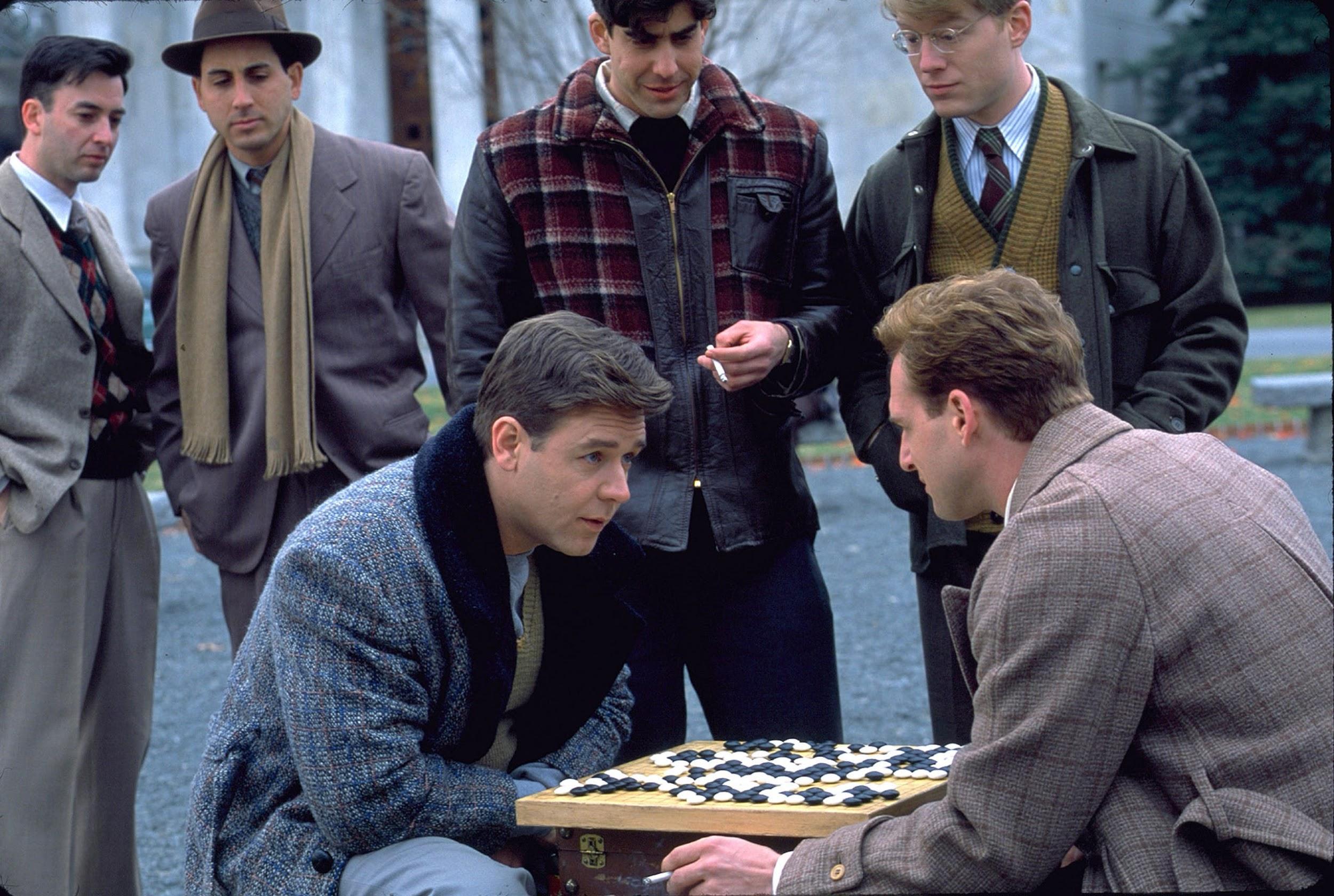
GO scene from the movie "A Beautiful Mind"
Introduction:
So you want to play GO!? Allow me, a nearly completely inexperienced novice beginner, to deliver you an attempt at explaining the basics of the board game GO. Arguably, GO is one of the oldest, if not The oldest, board games on Earth. Literally, a Bajillion people play this game. Which means a bajillion people can beat me at GO. But you don’t have to suffer my fate. You can learn the basic rules, win friends, play the game, and influence people. These are your first steps! A whole new world of boundless possibilities!
Here is a short basic beginning to the rules of GO.
Are you into Podcasts?
Come chat with your friends and all your favorite podcasters!
- Create a profile
- Follow podcasts
- Follow your friends
- Start discussing all your favorite episodes!
Required Materials
The first thing you will need to play GO is a friend! If you don't have any friends, don’t cry about it. Just download the GO app, where a growing avid GO community awaits, and set up a new game. If you don’t like friends, that’s okay too, just play with the AI specially engineered to destroy at GO and to “not” enslave humanity. Other needed materials for GO will be a board, and black-and-white stones to lay claim to territory.
GO is traditionally played on a 19x19 line grid board, and can also be played on 5x5, 9x9, and 13x13 sized boards as well. Smaller boards are good for quicker games, learning, and skill development.
Goal of the Board Game of GO
The objective of GO is to claim more territory than your opponent! Doing this is achieved through occupying intersections with stones and surrounding open territory.
Win! Win at all costs!!
What are the Rules of GO?
The rules of GO are very simple, in fact. Each player (black and white) places stones consecutively upon intersections. Each stone stays alive as long as it has an open liberty adjacent to it.
What are Liberties in GO?
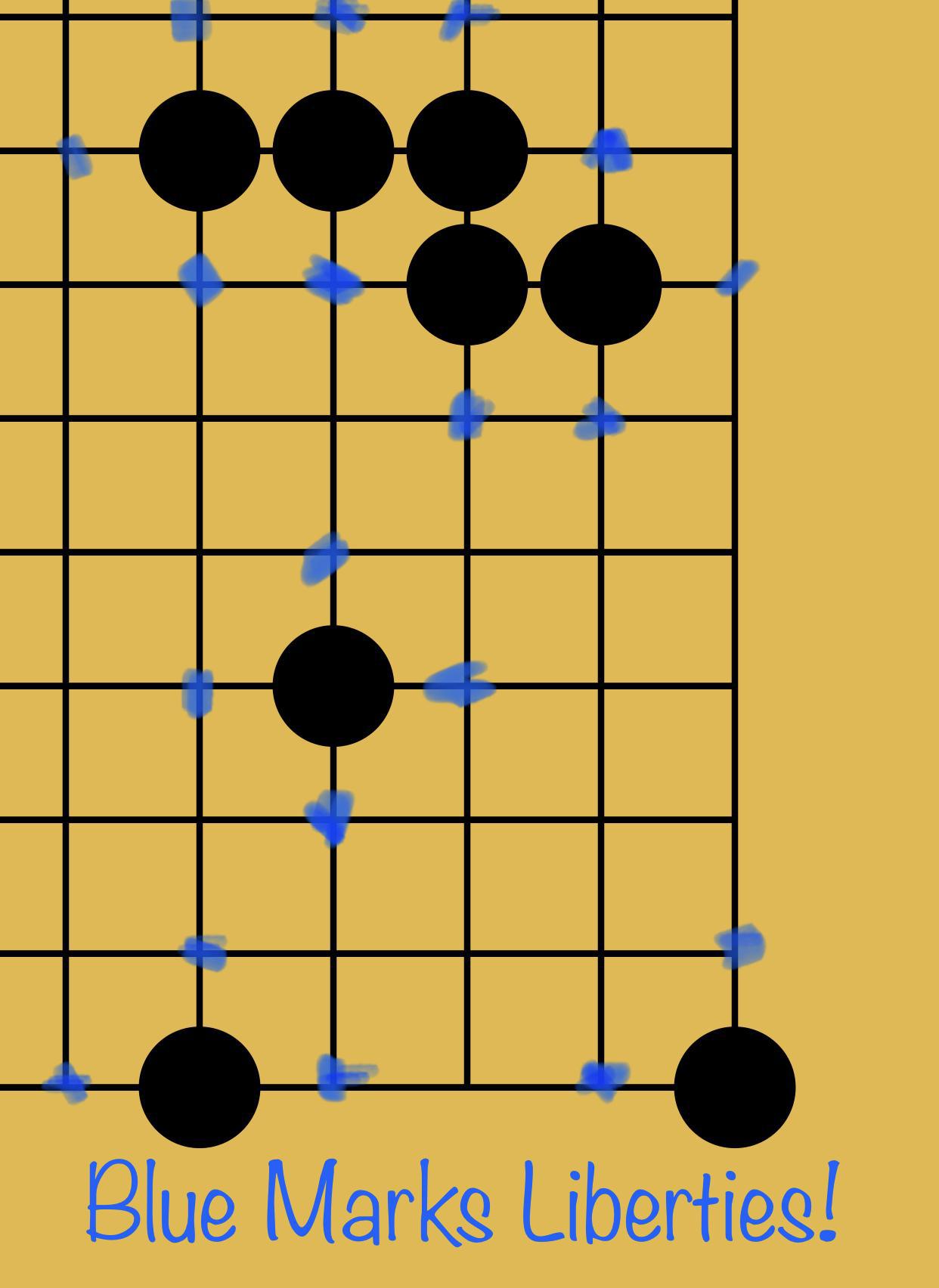
A liberty is an unoccupied intersection directly connected by line to a stone. There are four possible liberties to one stone on the open board, three on the edge, and two in the corners of the grid. When Stones are directly connected in succession to one another along a shared line of occupied intersections, they are considered a chain or string of stones. They behave as one unit and only need one liberty to stay alive. If a stone or a chain of stones loses all liberties, they will die and be captured by their opponent. Black goes first.
And those are all the technical rules of GO! Simple, huh? Not so fast…there are quite a few emergent rules of GO that arise out of these simple conditions. Let’s go over a couple.
What are Eyes in GO?
The first notable emergent rule in GO are the EYES. That’s right, the Hill’s have them! Eyes in GO are two or more open liberties formed by a chain of stones fully encircling them.
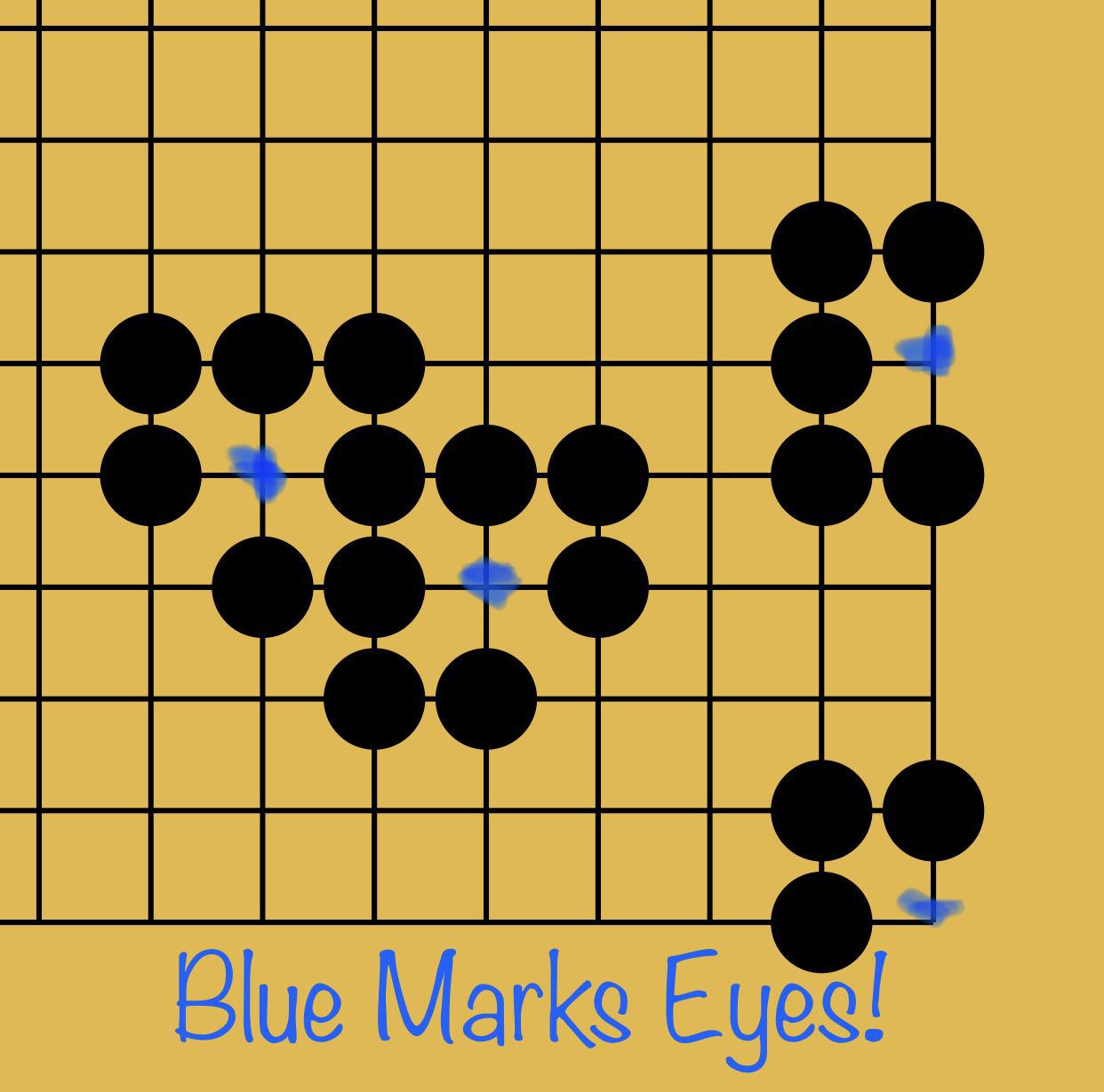
Naturally a stone is considered dead if all of its liberties are occupied by opposing stones; just like in my dating game. The dead stone is then removed from the board and captured by its opponent. So it would go without saying that the now unoccupied intersection, which is surrounded by opposing stones, would be a bad next move to make; this would be a suicide stone. There is no literal rule in GO saying you can’t move there. But over the eons this has become an assumed rule: stones may not be placed on intersections with no open liberties. It would be a wasted move and a poor loss of a stone's life. Please don’t do this!
Unless of course that stone has buddies to back it up! See, friends can be useful after all. A common way to capture an opponent's stones is to surround their chain by occupying all their liberties until they have but only one left and you can land the killing blow!!! In Japanese GO, this is called an “atari,” meaning “to hit the mark” or to “fortuitously receive;” not just a gaming console. If a chain has no liberties left but one, and that one is surrounded by the chain on all adjacent sides, then the opponent can land a fortuitous blow capturing the entire chain by occupying that liberty. In this case it is a good thing to place a stone on an intersection with no open liberties. It would cause your opponent to run away in terror! Please do this!

Having this chain surrounding a liberty on all sides is generally called an “eye” by all the cool kids. And everyone knows it is cooler to have two eyes than one; heck, the more eyes the merrier. Anything is better than just one!
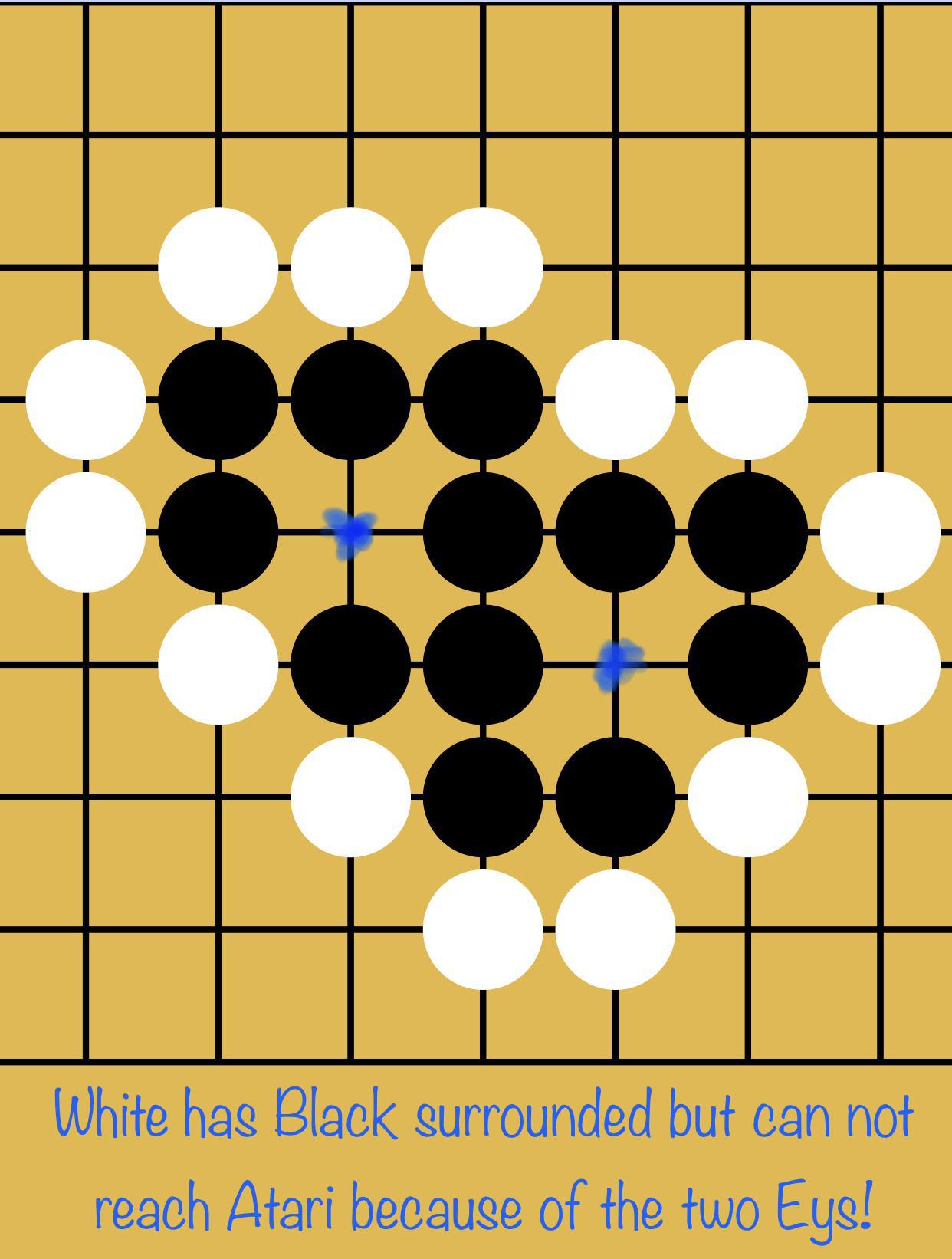
Having a chain of stones with two eyes or more allows it to guarantee an open liberty at all times, rendering it immortal!...BAHahaha. Since stones die when they have no liberties, the opponent will never be able to close the liberty gap to have that one move to capture them all. A chain with one liberty (atari) in the form of an eye can be surrounded and captured when the opponent places their killing blow in the eye last. But a chain with two or more eyes makes it impossible to capture because any stone placed by the opponent in one of the eyes will die immediately as the chain is still alive with an open liberty. It is advised to create chains with two or more eyes when playing GO as an intelligent strategy to secure the life of your stones. They will love you for it!
What is Ko in GO?
Another emergent rule in GO is the no-repeat rule or the rule of “Ko.” The Ko rule says that a stone cannot be placed such that it makes the board look exactly the same as it did from the previous move before. Meaning if a stone is captured, the next player cannot respond by placing a stone in the same location as the captured stone if it will capture the opponent’s previously placed stone. This would bring the board back to the state it was in two moves before, and could be repeated indefinitely.
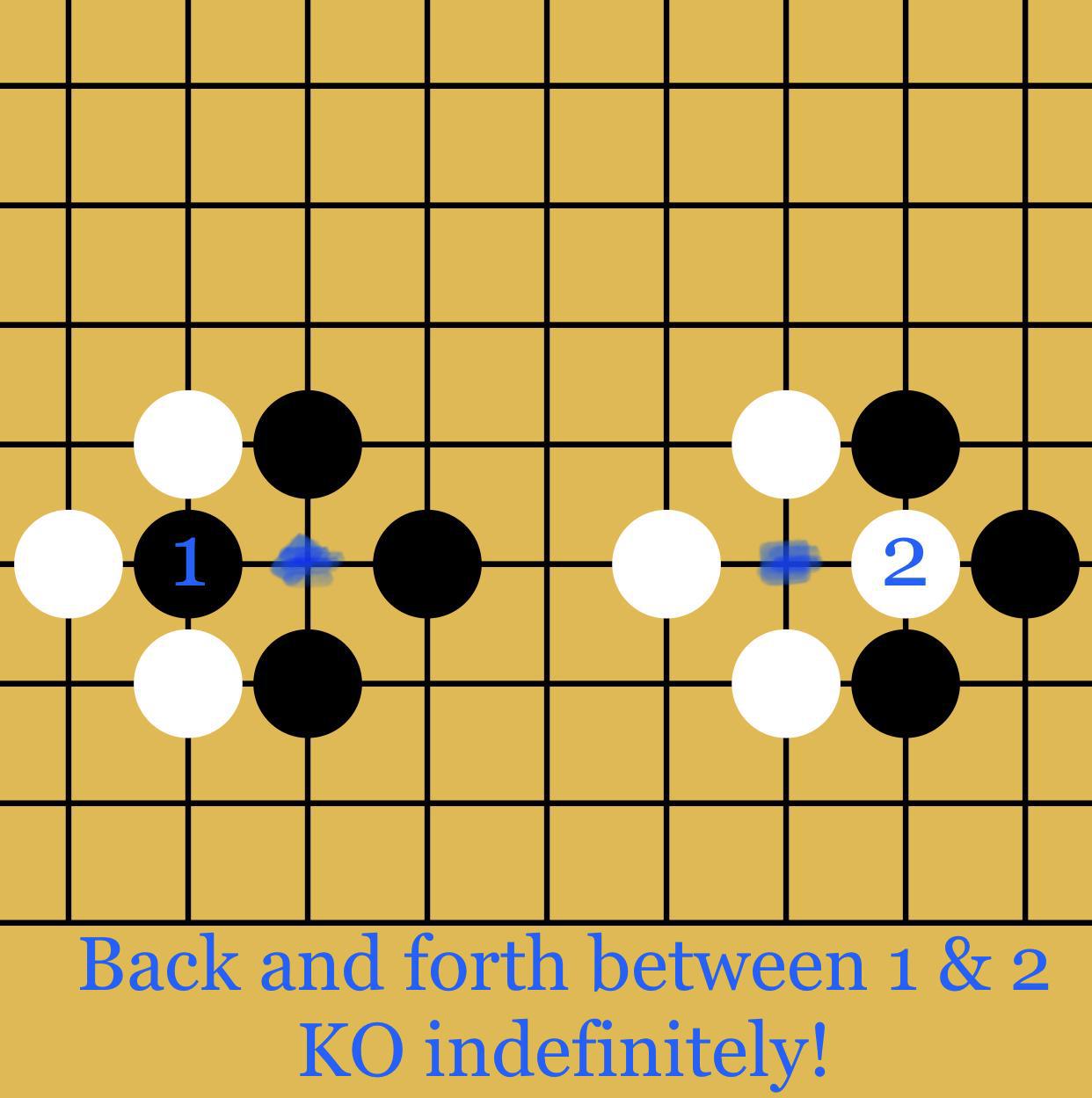
There are many other emergent rules of GO, most of which are reflected in the complex strategies that develop from playing GO and have become traditional understanding over time. A near endless interesting series of moves arise from playing GO. With experience, players have learned of situations with expected outcomes between seasoned players. Such as the situation known as “Seki.” Not to be confused with sake; of which the outcome is also well known.
What is Seki in GO?
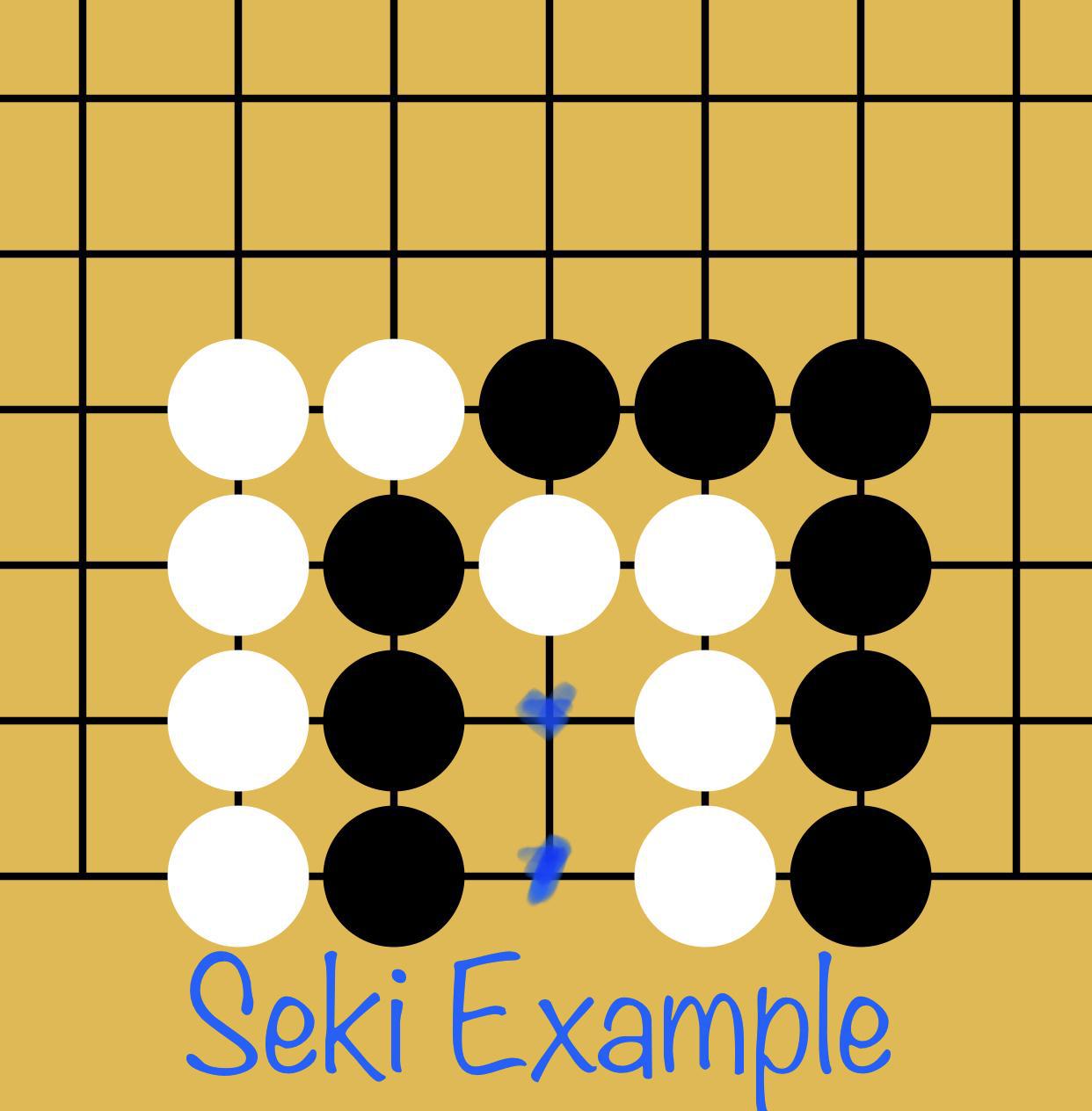
Seki is a Japanese term meaning “mutual life.” A seki tends to arise from situations where both players are fighting for capture of the other’s chain. These battles end in a stand-off situation, often where only two mutually shared liberties remain. If one player closes the liberty gap, they will place both players’ chains into atari; the next move made by the opponent will capture the player's stones.

Thus, neither player wants to make the first move, creating atari and essentially killing their own stones. These stand-off situations are left, by experienced players, to remain in seki, an unspoken agreed mutual-life position. At the end of the game the stones are counted as alive, but no points are calculated for the disputed territory. The game ends when both players choose to pass.
How does scoring work in GO?
Scoring can get complicated. In essence, if you dominate more territory, you win. The living stones on the board are counted up, plus the controlled liberties and surrounded territories. Some methods of scoring also include the count of captured stones into a player’s score. There are various scoring methods throughout the world. The subtly different scoring methods almost always give the same result. Nonetheless, the players should agree on the scoring method before each game.
What is Komi?
The black stones apparently have a slight advantage making the first move. Playing first allows black to stake an initial territory claim, that can often influence the direction of the game. Sometime in the 20th century, a handicap rule called “komi” was introduced that gave the white stones an automatic 0.5 score initial lead, in order to break a possible tie. Different national standards have the komi handicap as high as 4.5 to 7.5 added points. There is a lot of debate on what komi should be. The handicap is also increased according to the divergence of skill level and rank between players. In GoG the Komi can be preset, or custom to any value you want.
Ranking and Beyond
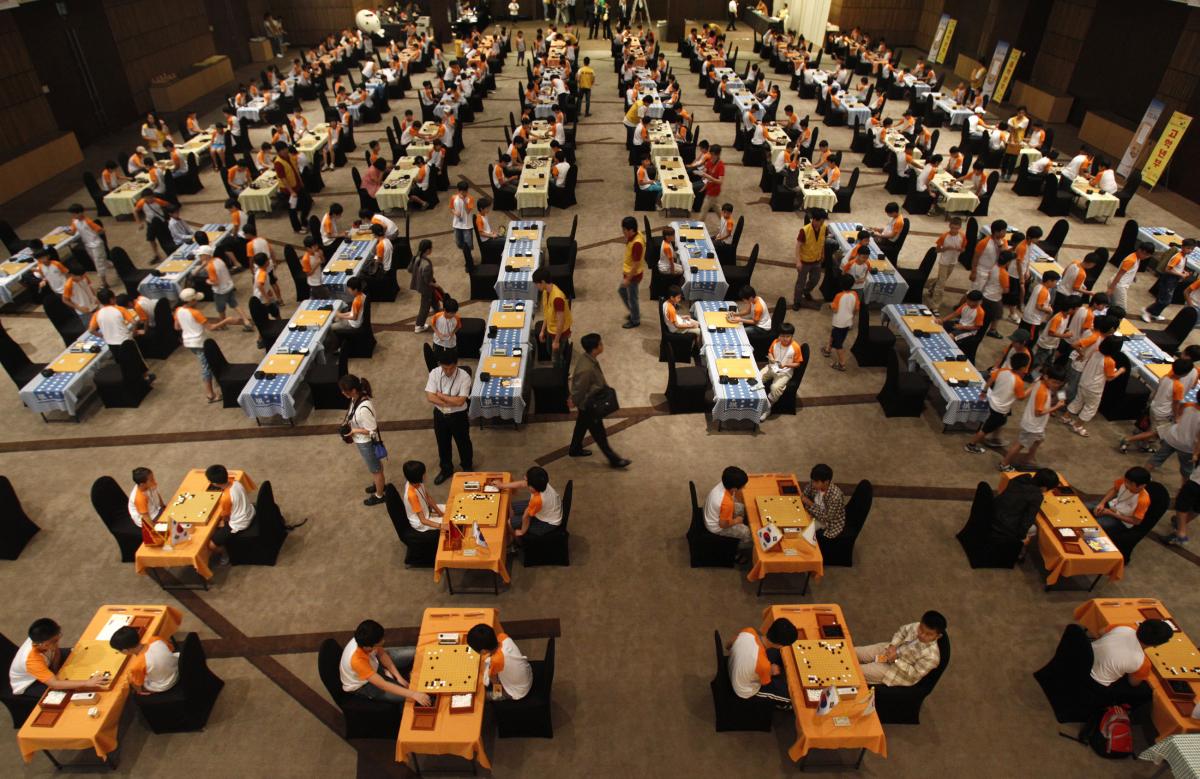
"Children participate in a mass contest of Baduk, the Korean version of the Chinese board game Go, in Seoul" (source)
There is a vast range of skill levels in GO. From baby beginners, like myself, to great masters of GO who have competed professionally. Competitions can be fierce and long, with thousands of players all across the world slowly working their way up the ranks to become the head Dan! Which currently is a computer named Fred.
The ranking system in GO can be just as complex and convoluted as the game itself. In Japan, the DAN ranking system is traditionally used. It is basically just like the Dan belt ranking system in many martial art forms, except in GO you won’t even qualify for a Dan level rank before having to drudge the student level ranks of Kyu. Kyu levels go in descending order from 30 to 1, followed by the Dan ranks ascending from 1st Dan up to the professional 9th Dan.
Komi handicaps of one to nine extra points are often just reserved for the Dan ranks respectively. If you notice there are 9 larger intersections on the GO board, this is where the extra moves would be placed at the beginning of a game between offset Dan ranked players. In contemporary times, the ELO ranking system is sometimes used. ELO doesn’t just stand for Electric Light Orchestra, it is also the name of a champion chess playing physicist or something. A further explanation of the ELO ranking system can be found here: ELO.
The richness and complexity of GO can never be overstated; Ten minutes to learn, a lifetime to master! Fortunately for us, we don’t need a lifetime, as exploring GO has never been easier with the GoG app and the supporting community. I could go on and on about all the unique emergent rules of GO and the fluid strategies that develop over time, but I would be doing you and GO a disservice to neglect the history. That’s right, time for a history lesson!
History
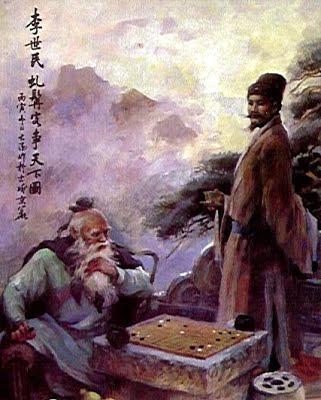
Ancient monks playing GO. (source)
A very brief history of GO! Once upon a time, a bajillion years ago, in a far away eastern land, probably China, maybe Japan, or Korea… who really knows (probably China). GO is so old we can't date its roots accurately. We can guesstimate that GO is probably between 1000 and 100,000 years old! Actually, closer to 3000 years old. And was used to predict the stars or something; like astrology where they tell you when you’re gonna die. Apparently a myth about GO suggests that it was originally used as an astrological tool to depict a person's relationship with the universe! Wow… what does that say about me since I lose almost every game I play??
GO has been referenced often in ancient texts. Such as the Analects of Confucius! Where I imagine seeing Confucius and Lao Tzu sitting and enjoying a cup of hot green tea over a Game of GO, perhaps both players are stuck in a perpetual seki in timeless GO heaven.
After being confused for checkers for centuries, GO eventually reached the shores and minds of the western world. We were really excited about this new game (new to us)! Unfortunately, because we sucked so bad at GO, we would never get invited to the cyber-GO parties in Japan and North Korea. So, we decided to show them and build a computer called BetaGo! It didn’t do so hot. We then changed the name to AlphaGO, and the rest is history! If you can’t beat em, build an artificial intelligence that can! Woot!
And that’s how the west won its first game of GO! After that someone had to go and divide by zero, because what’s better than winning first place? Zero place! Introducing AlphaGOZero! The hippest AI on the block! Zero calories, with all the original flavor! Plus a 100/0 winning streak against AlphaGoOne (the OG GO AI). It is said that AlphaGOZero has played more games of GO against itself than all of humanity throughout all of time and space. Imagine that- GO games that exist only as a digital construct in a computer's mind that we will never know about.
In Conclusion
I hope this article was as informative as it was silly. GO seriously is an amazing and rewarding game to play, and for many it is way more than just a game. Not only do people spend a lifetime playing GO, but many spend multiple lifetimes studying GO. The fulfillment and excitement of GO can be enjoyed at all skill levels, triggering deep appreciation for the game and the art. Also, science and mathematical elements found within GO may actually recall its ancient origin as a way of reading the stars and our lives. Many a GO player swears by how GO can teach you about yourself and your opponents' deeper nature: how they play, their character, or their very soul.Trust me, with over a googolplex of possible legal positions in a game of GO, you will never run out of insights to capture!
Are you into Podcasts?
Come chat with your friends and all your favorite podcasters!
- Create a profile
- Follow podcasts
- Follow your friends
- Start discussing all your favorite episodes!

Real storm trooper plays GO. (source)
